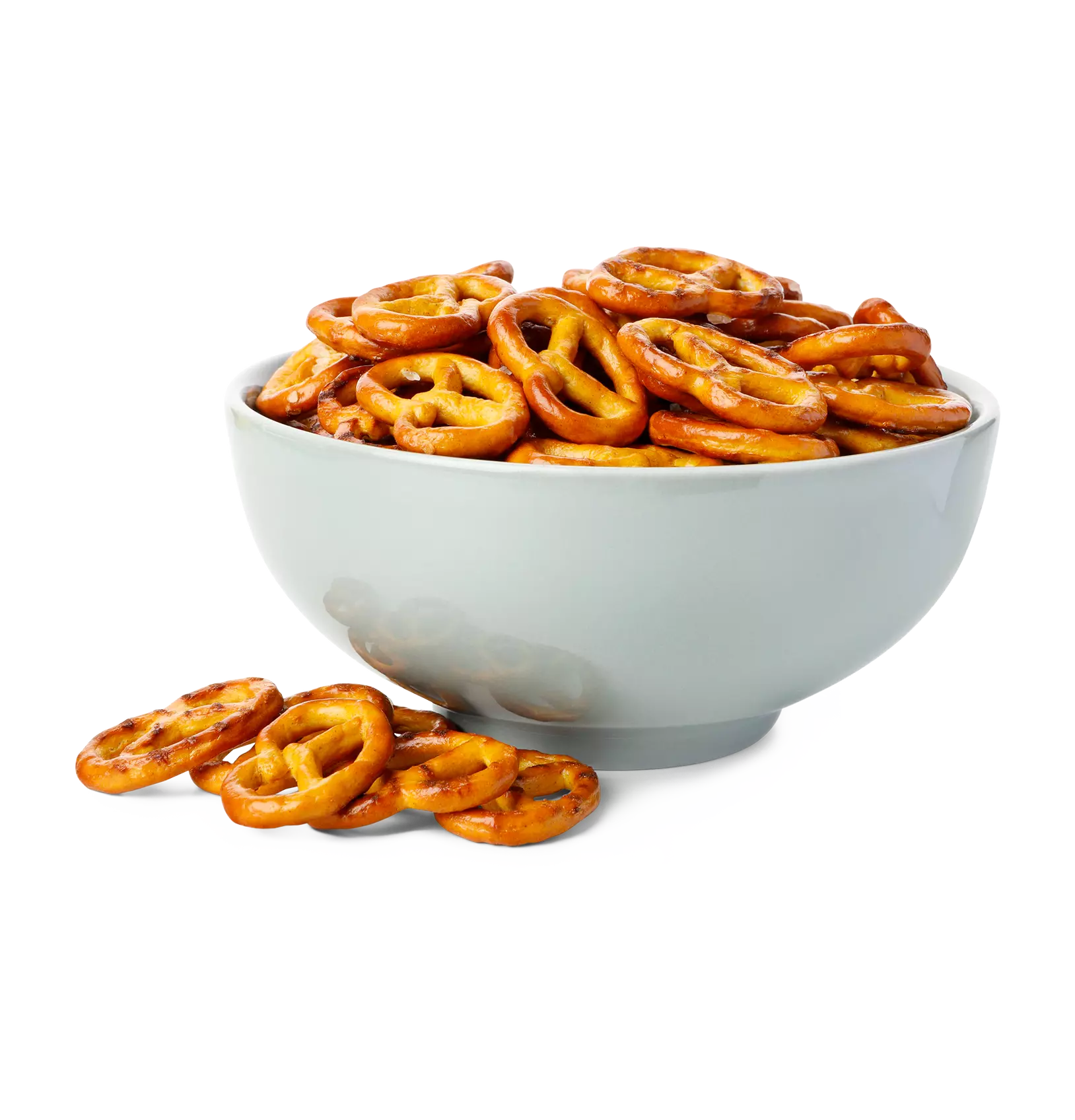Understanding the Full Lifecycle of Food and Beverage Products
Understanding the Full Lifecycle of Food and Beverage Products
Understanding the Full Lifecycle of Food and Beverage Products
2 Juni 2022
 John McCurdy | Senior Content Writer, Marketing
John McCurdy | Senior Content Writer, Marketing
When we see food and beverage products on shelves at the grocery store, we don’t always think about their full “lifecycles” and what it takes to go from idea to finished good. The foresight, research and planning that went into transforming the items from mere concepts to market-ready offerings just isn’t top-of-mind as we’re crossing items off our shopping list.
Of course, as an industry professional yourself, you know that much more goes into the development and delivery to market of any given finished good in the food and beverage sector. Specially trained scientists design it meticulously, marketing experts make sure it aligns with current appetites, financial analysts evaluate its profitability and upper-level project managers consider the eventual end of its line.
It’s a much more involved process than those on the outside might initially assume, and it’s an area of particular interest and relevance considering your manufacturing organization need to develop new products to meet changing consumer needs. Companies like yours are incentivized to tailor their offerings according to these shifts, and thus product lifecycle management (PLM) is likely top-of-mind at your organization.
Given that the topic is complex and involves many steps, we’ll try to simplify matters by breaking it down into four distinct stages in this blog post. We’ll also make special mention of critical considerations within each phase and how PLM software for food and beverage businesses shorten their time to market and manage the complete lifecycle at a holistic level.
1. Ideation
In the ideation stage, your research and development teams will work in coordination with your marketing department to identify opportunities according to the latest and greatest in tastes, ingredients and product benefits. Your staff should feel empowered to flex their creativity in this phase while still staying closely aligned with emergent preferences among shoppers.
Once the “hook” of the item has been established—be it a gluten-free version of a staple in your lineup, a more convenient on-the-go format for today’s busy consumers or an entirely new concept unlike any others you’ve put out before—defining the recipe and/or formula will be the next action item. This will include the specific ingredients and the precise measurements to use, and knowing there will almost certainly be many tweaks along the way as tests are conducted, keeping track of it all in a digital format is a must.
That’s where PLM solutions and their dedicated recipe and formula management tools really come in handy. By maintaining and updating such critical information in a single platform shared across the organization, everyone involved can be kept apprised of modifications as they occur, and important factors like allergen concerns and pertinent regulations can be flagged from the start so that they don’t fly under the radar until it’s too late.
2. Growth
The growth stage of a food or beverage product’s lifecycle involves further iteration on the product recipe to establish its final form, as well as extensive work by the marketing department to determine the ideal positioning given the current industry landscape. Together, these teams will prepare the item for launch and work closely with those in charge of packaging and labeling to make sure the item has the best chance possible to seize a share of shoppers’ budgets.
More testing involving external evaluators, including focus groups, can help your company gauge interest and adapt the product—as well as its name, look and the messaging around it—to either appeal to as wide an audience as possible or really hone in on a target demographic. Everything, from the taste and consistency of the item itself to the colors and words on the box, bag or wrapper, should be scrutinized.
Once all parties are satisfied that you’re ready to bring the finished good to market, a purpose-built PLM system for food and beverage can streamline the matter by codifying all of the parameters your teams have perfected. You’ll be able to verify all nutritional information is accurate and conveyed in a transparent fashion with tools for that specific purpose, and dedicated compliance features will ensure that everything is up to snuff according to the local enforcement agencies.
3. Maturity
Once the product is launched and officially enters its maturity stage, you’d think that the time for changes is over—but that’s not the case in a world as dynamic as food and beverage. Over time, alterations to the recipe may be desirable or even necessary due to supply shortages, and new packaging standards may emerge that demand a shift in your status quo.
Your PLM solution will continue to be indispensable throughout this phase, as you’ll need to turn to the same recipe and formula management tools used earlier to apply any modifications, and the packaging and marketing modules will be necessary for adjustments of those aspects. What’s more, regulations are a subject of much discourse around the world and continue to evolve, so your PLM’s compliance functions will remain highly relevant going forward.
Finally, consider that an advanced system—like our own Aptean Food and Beverage PLM Lascom Edition—can integrate with enterprise resource planning (ERP) software that includes robust financial analytics to discern profitability of your new offering and how pricing may need to be revised. That will help you get the most out of your exciting new products while maintaining the momentum you’ve built with the launch.
4. Decline
The decline of a product begins as demand drops and maintaining production becomes more of a financial burden as opposed to a boon. It could be that the height of its popularity has simply passed, or that another item has become a preferred alternative and is hindering sales, but you'll likely "sunset" the line and discontinue its manufacture in order to focus on better opportunities.
Here again you'll have an advantage with PLM software on your side, as you'll be ready to start a new product lifecycle fully equipped with the tools to do so. Your research, development and marketing teams can circle back around to the ideation stage and begin conceiving your next big hit in the food and beverage world, and your business can deliver an exciting new offering that will help your brand remain relevant in the market.
The Key Differentiators of Aptean’s PLM Software for Food and Beverage
For readers who have reached the end of this piece convinced that PLM software is something your company should consider, you’ll find that there is no shortage of options on the market. But before you pluck the first one off the virtual shelf and rush forward with a full implementation, it’s important to understand that not all of these systems are created equally.
Here at Aptean, we have decades of collective food and beverage industry knowledge, and we’ve put that expertise to good use in the development of Aptean Food & Beverage PLM Lascom Edition. For example, we know the cost of food safety emergencies and how much of a risk undeclared allergens can be in the manufacturing process, so we’ve made sure to include features that not only flag potentially problematic ingredients but also track shared manufacturing surfaces and equipment to head off cross-contaminations.
Our platform also serves as an inter-departmental “single source of truth” for everyone involved in new product development, ensuring that there’s no duplication of data or discrepancies in your information. Taking it a step further, the interface updates in real time as new readings and information come in, keeping your stakeholders in the know regarding the latest changes and results.
For one final benefit to keep in mind, our PLM for food and beverage organizations makes proper documentation and labeling a breeze with tools to automate the process and ensure that you disclose all that is required by law in your areas of operation. That should give you the peace of mind to move ahead with your launches with confidence while mitigating any risks of noncompliance.
Now, if you’re ready to hear more about Aptean Food & Beverage PLM Lascom Edition, reach out to us today. You can also schedule a personalized demo to get a look at the solution in action.
Einhaltung von Vorschriften in einem dynamischen, globalen Regelungsumfeld
Von Inhaltsstoffen über Etiketten bis hin zu Verpackungen stehen Lebensmittel- und Getränkehersteller vor vielen Herausforderungen, um die verschiedenen Gesetze und Vorschriften einzuhalten.



